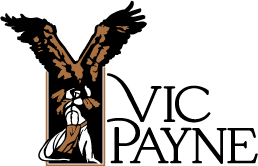
ARTIST BIO
Born in 1970, Greg Overton has been creating western art since he was very young. His grandmother was a horsewoman who lived the cowboy lifestyle. She was also an artist, encouraging her grandson to study and draw the American Indians he found himself going to school with. Historical paintings, illustrations and photographs deepened Greg’s fascination with the west, and he began emulating the works of Russell and Remington at the age of eight. Greg recognized and admired the powerful, animal expression he saw in the eyes of American Indian warriors; a sense of kinship that has led to a lifelong practice of martial arts.
Greg’s professional art career began at age 16, when he illustrated the first of many rock music album covers. His commercial career lasted throughout his 20’s as he did everything from theater backdrops to computer illustrations for the federal government. Formidably creative, Greg has even designed award-winning haunted houses for amusement parks, as far away as Hong Kong.
Eventually, Greg was drawn back to his childhood obsession with western art. He was listed as an “artist to watch” in Southwest Art Magazine in 2004. His paintings have been featured in Cowboys and Indians, Art Talk and Southwest Art. Collectors of his work now come from all over the world. Greg does extensive research for each painting to better understand his subjects and maintain authenticity, and he’s always searching for his next model. He studies tribal history and attends powwows and American Indian ceremonies to fine-tune his appreciation for Indian culture. Many of his paintings are based on historical figures such as Sitting Bull, Red Cloud and Geronimo. Combining historical photographs with his modern American Indian models, Greg can create powerful, archetypal portraits dedicated to the American Indian way of life. He often adds birds to his compositions, which he considers mysterious, multidimensional animals. They and the other animal representations in his work (elk and buffalo robes, eagle feathers, bones, etc.) reflect a spiritual dimension that collectors immediately respond to.









